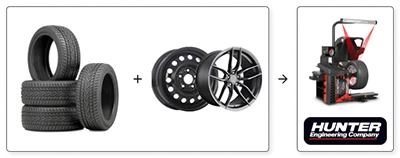2024-05-03
Practical Guide: Deciphering Your Tire Markings

To ensure driver safety, regulations require tire manufacturers to place standardized information on the sidewall of all tires. These detailed markings help identify and describe essential characteristics of the tire, including its size, type, load capacity, and maximum speed. These details are crucial not only for ensuring safe and appropriate use under driving conditions but also for facilitating product recalls by incorporating a Tire Identification Number (TIN) for safety standards certification.

Location of data on the tire wall
- Tire category: 'P' indicates the tire is for passenger vehicles.
- Tire width: This three-digit number is the width of the tire in millimeters, from one sidewall edge to the other.
- Aspect ratio: This two-digit number is the sidewall height as a percentage of the tread width. For example, if the tread width is 205 mm and the aspect ratio is 50, the sidewall height is 102 mm.
- Tire construction: 'R' indicates that the tire is of Radial construction.
- Wheel diameter: This two-digit number represents the diameter of the wheel rim in inches.
- Load index: This two or three-digit number indicates the weight each tire can support. This number is not always shown.
- Speed rating: When stated, it indicates the maximum speed (in mph) at which the tire can be used for extended periods. Ranges from Q=99 mph (160 km/h) to (Y)=beyond 186 mph (300 km/h).
- Load range: Shown as Standard Load (SL) or Extra Load (XL), the load range determines how much weight your tires can support at a specified tire pressure. When replacing tires, only use tires of the same load range.
- Tire composition and materials: The number of plies in both the tread area and the sidewall area indicates how many layers of rubber-coated material make up the structure of the tire.
- Maximum tire load: The maximum load that can be carried by the tire.
- Maximum permissible inflation pressure: This pressure should not be used for normal driving.
- U.S. DOT Tire Identification Number (TIN): Begins with the letters DOT and indicates that the tire meets all federal standards.
- Treadwear grade: This number indicates the tire’s wear rate. The higher the treadwear number, the longer it should take for the tread to wear down.
- Traction grade: Indicates a tire’s ability to stop on wet roads. A higher graded tire should allow you to stop your vehicle in a shorter distance than a tire with a lower grade.
- Temperature grade: The tire’s resistance to heat is graded A, B, or C, with A indicating the greatest resistance.


